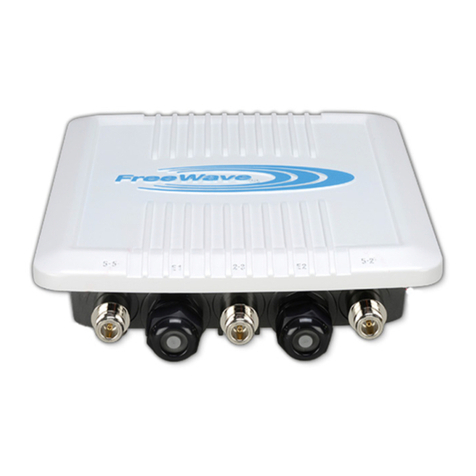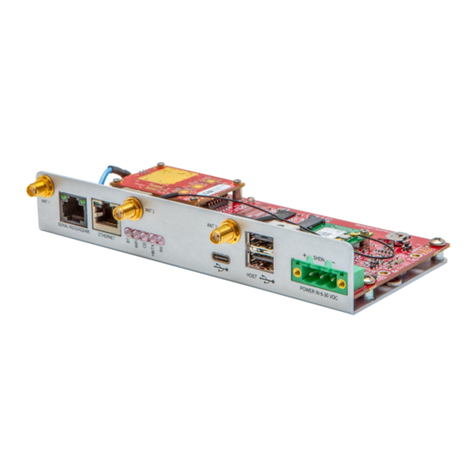Configure Basic Wireless LAN Settings
Configure basic wireless settings BEFORE installing the WavePoint 10e in a
hard to reach location.
1. On the Wireless LAN menu, click Radios > Basic.
2. Right-click the radio to configure and select Edit.
Radios are labeled 1, 2, 3, and 4. The label on the back panel of each
WavePoint 10e identifies what type of radio is installed and which
number corresponds to each installed radio.
3. Select the Mode.
AWavePoint 10e can be set to be an Access Point, Client, or Repeater
within the network.
See the WavePoint 10e User Manual for additional information on
using Access Points, Clients, and Repeaters.
Note: If the WavePoint 10e is configured as a Client, it will not be
accessible wirelessly. A network requires at least one Root
Access Point for a wireless link to be established.
4. In the SSID field, enter the name of the wireless network.
The SSID field is case sensitive.
5. In the Security field, select the level of security to apply to the wireless
network.
6. In the Security Key field, enter the key required for a device to connect
to the WavePoint 10e through a wireless connection.
The Security Key field is case sensitive.
Note: By default, all WavePoint 10e devices are shipped with the
same SSID and Security Key and connect automatically. For
security, and to avoid duplication of neighboring network
names, it is highly recommended to change this to a unique ID.
The SSID and security settings must match between an Access
Point, Client, or Repeater to establish a wireless connection.
Additional radio settings are available. For detailed information see the
WavePoint 10e User Manual.
7. ClickSave to save the changes and send them to the WavePoint 10e or
click the Xin the upper right corner to clear any changes without saving.
8. On the Wireless LAN menu, click Radios > Advanced.
9. Right-click the radio to configure and select Edit.
10. Use the scroll bar on the right to scroll down to the Max Range field.
11. In the Max Range field, enter the appropriate Kilometer distance.
See the WavePoint 10e User Manual for information to establish
communication between WavePoint 10e devices in a Point-to-Point network
or a Point-to-Multipoint network.
Verify the Wireless Connection
While the WavePoint 10e is easily accessible, verify that the wireless
connection is active.
Important: This procedure is only applicable to 2.4 GHz
WavePoint™devices.
1. Log out of the Configuration web pages.
2. Close the web browser.
3. Disconnect the Ethernet cable from the computer.
4. Using a computer with wireless capability, establish a wireless connection
using the SSID and Security Key defined in the Basic Radio Settings
page.
5. After the connection is established, open a web browser and enter the IP
address in the browser navigation bar.
The IP address was entered in the LAN Setup page.
The Login page is shown when a successful wireless connection has been
made. If there is no connection, see the Troubleshooting Tips.
Troubleshooting Basic Setup
I cannot verify connectivity.
If connecting to the WavePoint 10e through a wired Ethernet connection,
verify the WavePoint 10e has power and the Ethernet cable running from the
computer with the browser is connected to the Ethernet port on the right side
of the front panel next to the power port (Ethernet 3).
If the device is connected through a wireless connection, confirm the correct
SSID and Security Key are used to establish the wireless connection and the
unit is not configured as a Client.
I cannot access the configuration pages from a browser.
If you have established a wireless connection, verify the IP address entered in
the browser's navigation bar matches the device you are trying to connect to.
I cannot access settings on the Configuration pages.
Many configuration settings are accessible through a right-click menu on the
Configuration pages.
Note: The right-click functionality is NOT available on the
Configuration pages when viewed through a mobile device.
Copyright © 2014 FreeWave Technologies, Inc.
QSG0023AARev A 04/23/2014























